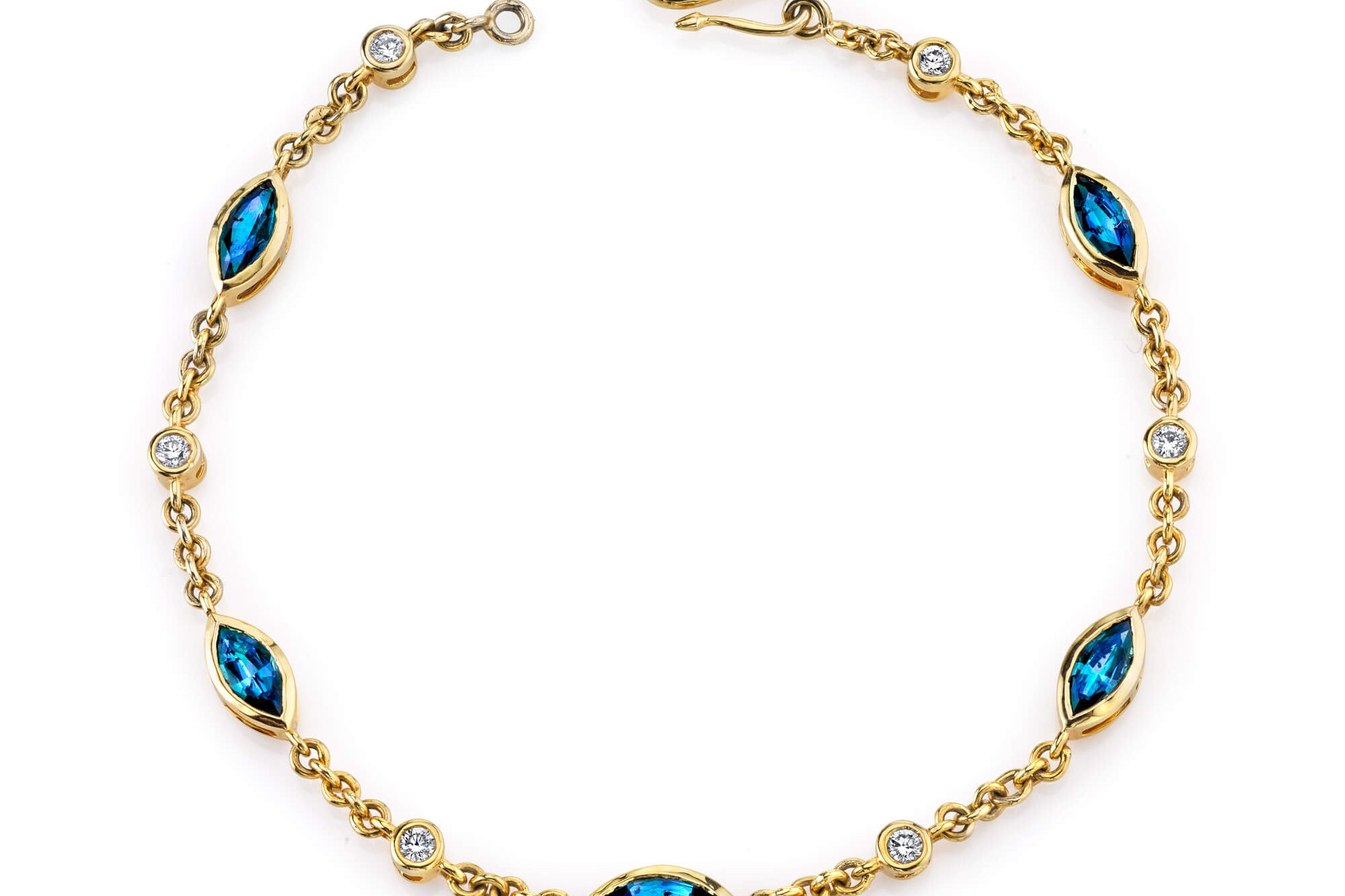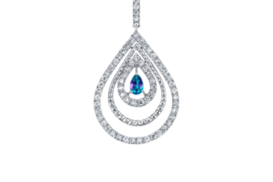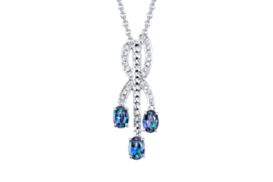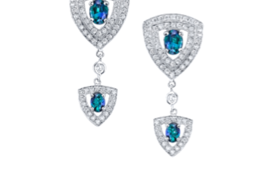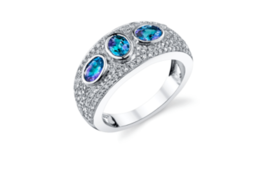Lab Created Alexandrite (Synthetic Alexandrite) vs Natural Alexandrite

Rare, real, and raw - that’s precisely what we look for in the gemstones we purchase. But when it comes to rare precious stones like alexandrite, finding the natural, authentic version can be a task. Naturally occurring alexandrites are super rare and aren’t found in bulk like other precious stones. Even if you do find a naturally occurring alexandrite, the price would be quite high, thanks to its rarity.
Considering these aspects, most people shift their preference from natural alexandrites to lab created alexandrites. The former is hard to find and super expensive, whereas the latter are easy to find and relatively cheaper. In addition, lab created alexandrites are flawless and have the perfect composition, making them a great alternative to natural versions. But for gemstone lovers, the question is always - are lab created alexandrites worth the investment? Are they really as good as natural alexandrites?
In this post, we’ll be telling you everything you need to know about natural alexandrites and how they are different from their lab generated versions. Right from the composition and properties to the appearance, we’ll be running you through all aspects you need to know about alexandrites before you decide which one is best for you. Let’s get started:
Properties of Real Alexandrites
Real alexandrite is known for its impeccable color-changing properties. Emerald by the day, Ruby by night is a classic phrase used to describe this unique gemstone. When exposed to daylight, the alexandrites shine bluish green, and when it gets darker and under candle light, you’ll notice how your alexandrite gradually changes to a purplish red. This magical transformation occurs only in a rare composition found in the gemstone chrysoberyl.

The special trace elements present in alexandrite is what brings out its chameleon-like properties. Alexandrites can form only when aluminum and beryllium combine with other elements such as titanium, iron, and most important of all - chromium. In some rare alexandrites, you’ll also find vanadium. The combination of these minerals under the right geological conditions will lead to the formation of alexandrites. The probability of all the aspects being in place is not high, which is what makes natural alexandrites so unique and rare.
Where Are Natural Alexandrites Found?
The first alexandrite deposits were discovered in Russia in the Ural mountains. Back then, the Russian alexandrites were the only source of this precious gemstone in the market. However, high demand for the naturally occurring alexandrite from Russia leads to the depletion of sources in the Ural mountains. By then, the interest in this precious stone had dwindled in the market, but with the discovery of new alexandrite reserves in Brazil, the craze for alexandrites shot up again. Alexandrite deposits were also found in India, Madagascar, Sri Lanka, and Tanzania, however alexandrites from these countries did not consistently produce outstanding specimens like from Brazil which eventually gained recognition and popularity across the world.

How Can a Stone Change Its Properties?
It’s almost difficult to believe that a stone has the ability to change colors, right? Alexandrites are one of a few precious stones that can change their color, thanks to their composition. Naturally occurring alexandrite is a blend of different minerals, of which chromium is the most important. Chromium is the key color-changing element in alexandrites, and we can safely say - the more the amount of chromium in alexandrite, the better its color-changing properties will be.
The color-changing alexandrite is a strongly pleochroic gem, and it absorbs light easily. When the alexandrite absorbs light, it only takes in the yellow and blue light spectrum. This leaves behind the green, orange and red spectrums, visible to us. This precious stone is exceptional at reflecting green wavelengths of color. It shines in a blue green color when exposed to fluorescent light. On the other hand, in incandescent light, the green wanes away, and you can see it’s a plum-red, shiny, and bright alexandrite.
If alexandrites display a 100% color change, you’ve found a high quality alexandrite. But finding these near-perfect alexandrites these days is a task. It is nearly impossible to find any natural alexandrite that displays a 100% change in color. But yes, alexandrites come in different hues and shades as well. So, just because your stone doesn’t change from blue-green to purple-red and vice versa, it doesn’t mean you don’t have an alexandrite. As long as the color-changing properties of the gemstone are visible enough, they can be categorized as alexandrites.
Apart from their color-changing properties, alexandrites are also known for their pleochroism. This means that the gem also appears in different colors from different directions! Surprised? Well, there’s not just one feature that makes this gemstone so unique and different from all the other precious stones! Alexandrites aren’t your ordinary gemstones - they are rare, special, unique, and resplendent!

Synthetic Alexandrite vs Real Alexandrite
Understanding how lab created alexandrites are made can help us know what makes them different from the naturally occurring ones. Technically, there’s no difference in the composition of natural and artificial alexandrites. They are both made of the same elements - beryllium aluminium oxide, which explains why they have a similar texture, durability, and other characteristics.
Once the composition of any naturally occurring elements is known to scientists, it’s not difficult to replicate the same in the laboratory. The naturally occurring alexandrite forms only under specific geological conditions. These conditions are closely replicated in the laboratory, resulting in an almost realistic alexandrite.
This brings us to the question - are natural and synthetic alexandrites the same? Do they have any differences? Let’s have a better look:
Durability
Natural alexandrite is extremely hard and is known for its durability. Every precious stone is rated for its hardness on Moh’s scale. This scale helps us understand how tough and scratch-proof any given stone is. The least rated gemstone on the Mohs scale is Talc, which stands at number one. The highest is diamond, which is rated 10.
On the Mohs scale, alexandrites stand at 8.5, which is a pretty good value and comes only next to diamonds. Diamonds stand first on the Mohs hardness scale, followed by alexandrites. Alexandrites are a great pick when it comes to everyday usage, as they can sustain a reasonable amount of wear and tear. In addition, their composition makes them resistant to chipping and cracking.
Even though natural and artificial alexandrites feature the same level of durability, given a choice, natural alexandrites would always be a better pick. The natural alexandrites are created under tough geological conditions, which give them an edge over their artificial versions.
Color
Natural alexandrites display amazing color-changing properties. They are created naturally with just the right set of geological conditions - perfect temperature, high pressure, and yes, the perfect blend of natural elements. While artificial alexandrites are created in similar conditions in the laboratory, it is impossible to replicate the exact same conditions in a lab. This explains why every natural alexandrite is unique and displays unique color-changing properties. That’s not the case with lab created alexandrites, as they are mass-produced and appear the same. So if you’re looking for a rare, raw, and unique gemstone, natural alexandrites are a perfect choice.
There is a growing trend towards ethical diamonds or lab grown diamonds as an alternative to real diamonds. Since diamonds are colorless, it is very hard for someone to determine if a diamond is real or synthetic by looking at it with the naked eye. However, with color stones in general and alexandrites in particular, there is a distinct difference in color between natural and synthetic. As you can see below, the color change of a lab grown alexandrite looks almost unnatural. In most cases, one can tell if an alexandrite is natural or synthetic by simply observing the color change.

Source: https://www.alexandrite.net/chapters/chapter7/index.html
Clarity
Naturally formed alexandrites come under the area categorized as Type II clarity stones. The natural alexandrites also feature impurities, which appear in the gem as black spots. The impurities in alexandrites affect the way the alexandrite reflects light. There’s no way to eliminate these impurities and flaws found in natural alexandrites, but that’s not the case with those created in the laboratory.
Lab-created alexandrites are created with just the essential minerals and there are no natural elements present in them. Every lab created alexandrite is just the same - they are mass-produced and look just the same. As the clarity of lab-generated alexandrites is the same, you cannot expect them to display the unique color-changing properties visible in natural alexandrites. So if you wish to own or gift a unique alexandrite - one that’s not commonly found and cannot be replicated, natural alexandrites are the right pick for you.
The Difference in Color in Lab Generated and Real Alexandrites
The finest alexandrites are typically bluish green by the day and purplish red by night. Natural alexandrites generally offer only these two colors, whereas artificial ones come in various hues. The intensity of the color change differs from one alexandrite to the other. Laboratory-created alexandrites come in different colors such as fluorescent, tungsten, emerald, ruby, and amethyst. The tones may vary depending on the alexandrite’s source.
Final Verdict
Naturally occurring alexandrites are hard to find, which is why many jewelers started using lab created gemstones. The composition of natural and artificial gemstones stays the same, but no matter how similar they are, we cannot forget that lab created alexandrites aren’t natural. This is exactly why natural alexandrites are preferred over their lab-generated versions. Top, elite jewelers work only with natural alexandrites, as they have a charm of their own. In addition, the naturally formed alexandrites are valuable as they are part of the geological heritage of our planet.
Unlike lab grown diamonds and real diamonds where even an experienced jeweler will have to test the stone to determine its authenticity, lab created and natural alexandrites can be easily spotted by a trained eye. In most cases the stones don’t even have to be tested, a trained eye would be able to tell if you are wearing a synthetic alexandrite or not. There is a clear difference in the way it is made, the clarity and the way it looks and the overall color change of the stone that gives it away. Every naturally formed alexandrite is unique and has a different pattern and color-changing properties. But the lab-generated ones are all the same. This is because the formation process of the lab created alexandrite is the same, and they are produced in bulk. Thanks to this, it’s also easier to find lab-generated alexandrites at a cheaper rate than natural alexandrites.
Finding a naturally formed alexandrite is difficult (but not impossible), and it costs a lot too! They are rare, unique, and amazing, so if you have to gift it to someone special, it’s best to choose natural alexandrite. If you’re looking for a real natural alexandrite, choosing a reliable jeweler is important. A reliable gemologist can help you identify the perfect natural alexandrite easily.
Now, scroll through 10 of the most stunning natural alexandrite jewelry designs.
1. Midnight Dream - 14K White Gold Ring

Our Midnight Dreams ring features an alternating Alexandrite and Diamond pattern to spark an elegant play of brilliance and reflections. The meticulous work of Safiya’s artisans find expression in the delicate contours of the fully set ring, great for stacking or perfect on its own.
BUY NOW2. Floral Temptation - 18K White Gold Pendant

Like so many flowers dancing in the breeze, the Floral Temptation by Safiya stand out with it’s dainty and airy aesthetic. Shimmering diamonds bestows a brilliant radiance upon the colour-changing Alexandrite hand-set in the shape of petals. Give into the temptation, and see how this captivating pendant transforms colors from day to night.
BUY NOW3. Cupid's Touch - 18K White Gold Pendant

Looking for a way into her heart? This Cupid’s Touch pendant will help you do just that. Simple, and petite with a modern twist this pendant features one of the rarest gemstones - Alexandrites. Sneak into her thoughts subtly when you gift her this playful pendant that also incorporates shimmering diamonds in 18K White Gold. She’ll get the hint, trust us.
BUY NOW4. Floral Essence - 18K White Gold Ring

Named Floral Essence, this unique piece celebrates your emotional well-being. Set in an 18K White Gold band, the ring features seven round-shaped beautiful Alexandrite 0.21cts stones adorned with a border of shimmering Diamonds. The perfect ring to bring an elegant flare to any outfit.
BUY NOW5. Tantalice - 18K White Gold Ring

This gorgeous Tantalice ring bridges the gap between a statement piece and a classic band. Featuring four natural Alexandrite stones and a shimmering Diamonds in an alternating pattern, its a ring perfect to declare your love and adoration. Layer up on elegance with this delicate ring that pairs seamlessly with others or perfect on its own!
BUY NOW6. Princess Lady - 18K White Gold Earring

The stud for every occasion. Our Princess Lady earrings feature a mesmerizing Alexandrite at the center and sparkling Diamonds on a circular earring stud. Crafted from 18K White Gold, this is truly a standout piece. Wear this jewel for the ultimate lobe statement.
BUY NOW7. Twin Waves - 18K White Gold Natural Alexandrite Ring

Want to commemorate the idea of intertwining lives? This Twin Waves ring does just that. With stunning Brazillian Alexandrites and sparkling Diamonds designed in the shape of infinity, this is a timeless ring symbolizing an unconditional bond with your loved one.
BUY NOW8. Love Potion - 14K White Gold Ring

A ring with all the right moves. Mindful of mother nature, this expertly crafted ring features a natural and untreated Alexandrite stone with several round diamonds glittering on a 14K gold band. An expert at catching light. Skillful at drawing attention. A real crowd-pleaser. What are you waiting for?
BUY NOW9. The Admirable - 14K White Yellow Gold Ring

Crown your finger with this glam Admirable ring from Safiya. Showcasing three brilliant natural Alexandrite stones held by Yellow Gold claws to enlarge the look of Alexandrites, the Diamonds set in an alternate pattern brings subtle glamor to the ring. The combination of Gold, Alexandrite and Diamond adds boost of elegance to your daily look.
BUY NOW10. Emerald Love - Platinum Ring

Celebrate the love you hold in your heart with this elegant and sophisticated Alexandrite ring design by Safiya. Emerald Love has been intricately handmade in Platinum and features a delicate stepping as the ring travels through the round brilliant cut Diamonds on the shoulder up, into the larger Diamonds and finishing with the pinnacle, an alluring princess cut Brazilian Alexandrite. A ring as impassioned in it's craft and design as you are for one another.
BUY NOW
